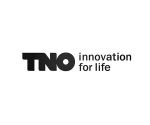YPN visits TNO Delft
The next YPN company visit will take place at TNO Optomechatronics, located in Delft, on Thursday 26th of October 2023.
TNO Delft Optomechatronics develops world-class optomechatronic systems for applications in space, ‘big science,’ and the semiconductor industry. Examples include earth observation spectrometers, modules and equipment for the semiconductor industry, focusing on sensors, metrology and lithography concepts, and a wide range of sensors and actuator systems for the big science facilities (ITER nuclear fusion reactor, the KM3NET neutrino detector and large astronomical telescopes).
Registration
Participation is free of charge. Please send an email to info@dspe.nl if you are interested in this company visit. Free parking spots are available at the TU Delft campus if a license plate is included with the registration. For this visit identification with a valid document at the TNO reception is necessary (Passport, Identity Card or Dutch Driving License).
Program:
13:00 – 13:15 Welcome
13:15 – 13:30 General introduction TNO & activities Stieltjesweg
13:30 – 13:50 Techtalk 1: Space activities
13:50 – 14:20 Techtalk 2: Laser Satcom + case 1
14:20 – 14:40 Coffee Break
14:40 – 15:10 Techtalk 3: Astronomy + case 2
15:10 – 15:30 Techtalk 4: TBD
15:30 – 15:50 Coffee Break
15:50 – 16:50 Facility tour
16:50 – 18:00 Networking + Drinks
Location: TNO Location Delft, Stieltjesweg 1, 2628 CK Delft
If you want to join this YPN event please send an email to info@dspe.nl.
